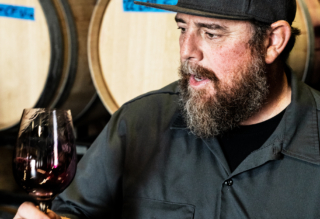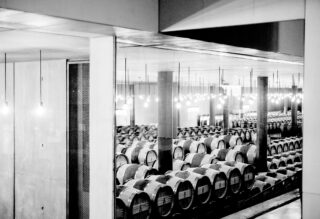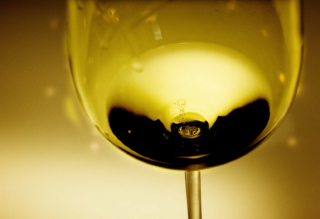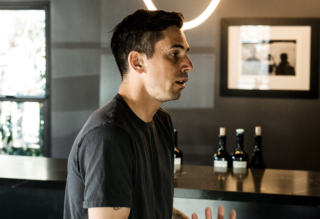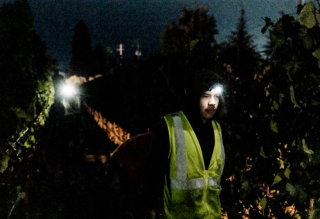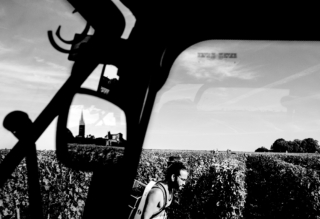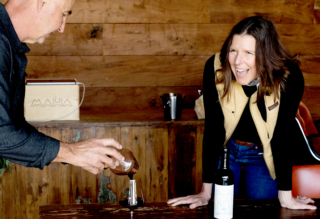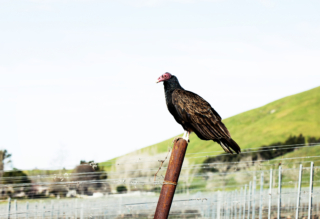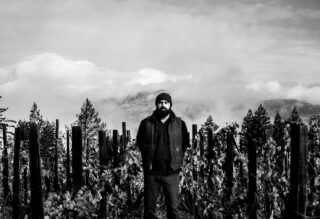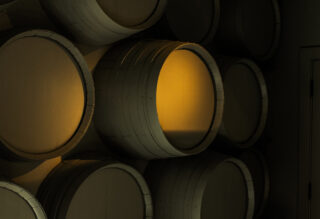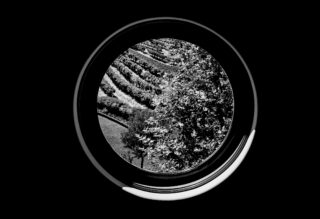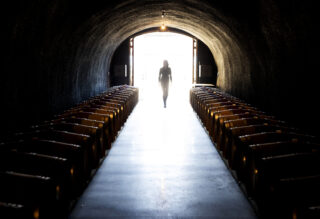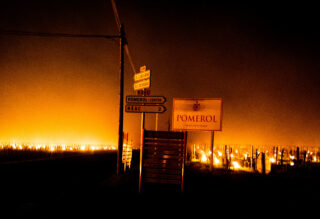Playing the Long Game
A Visit with Sea Smoke
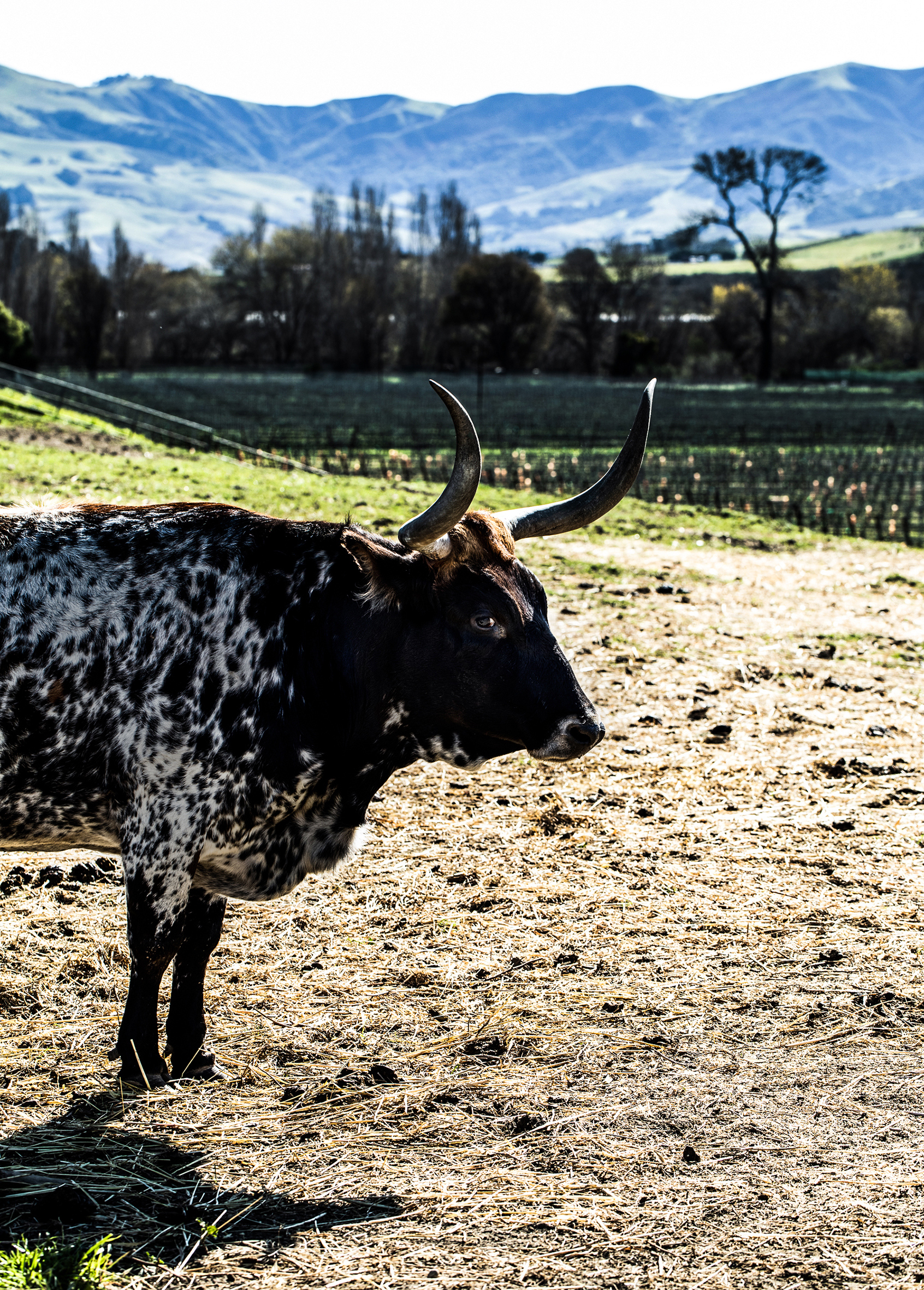
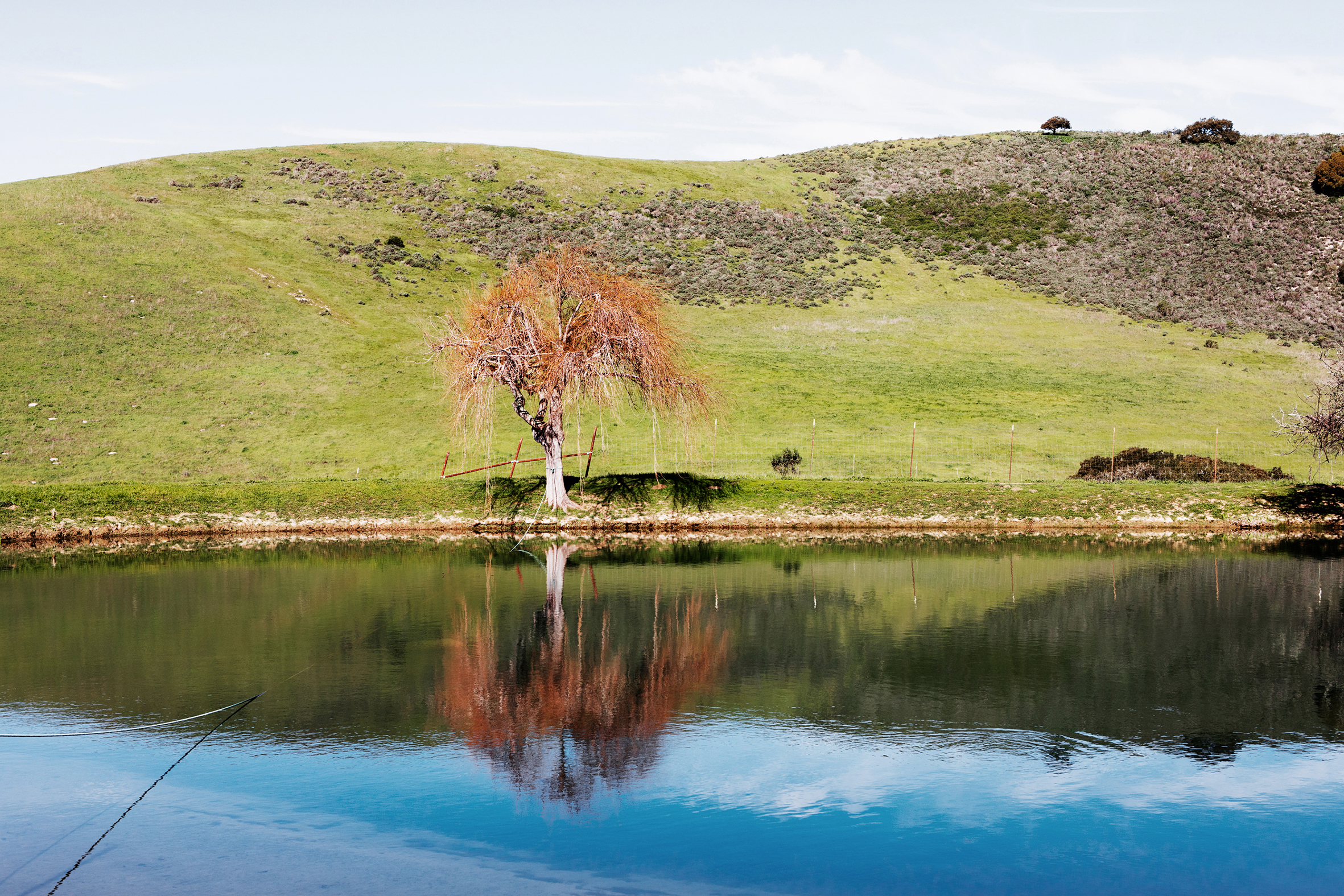
The city of Lompoc is idiosyncratic.
It’s an amalgam of worn-down strip malls, cannabis dispensaries, donut shops, nail salons, coin laundries, dry cleaners, and neighborhoods that range from tidy and quaint to dicey and neglected. The only movie theatre of note, The Lompoc Theatre, hasn’t run a movie since 1987, when it closed; despite numerous fundraising attempts, it remains shuttered. At the opposite end of town, a long-defunct Drive-In screen stands in a field of overgrown weeds.
It’s home to the Vandenberg Space Force Base, a federal correctional institution, a diatomaceous earth mine, and the La Purisima Mission, one of the least manicured yet beautiful missions in all of California, with a working farm, extensive hiking trails, and numerous mission buildings. An urban wine trail nearby draws some attention, but the sister city to Namwon, South Korea; Cheyenne, Wyoming; Inca, Spain; Lake Placid, Florida, and Locarno, Switzerland, is an otherwise economically challenged, often over-looked agricultural and military town.
On the outskirts, leaning into the city, is the Sta. Rita Hills winegrowing region, one of California’s most celebrated coastal appellations. It stands in stark contrast to Lompoc, with its lush, oak-dotted hilltops and vast canyon lands, alive with bobcats, roadrunners, mountain lions, coyotes, redtail hawks, and owls. The roster of producers making wine in this region reads like a Who’s Who of fine wine producers: Eleven Confessions (Sine Qua Non), The Hilt (Jonata), LaBarge, Melville, diatom, Brewer-Clifton, Donnachadh, Joy Fantastic, Tyler, Pence, Peake Ranch, Sanford & Benedict, and Sea Smoke, among others.
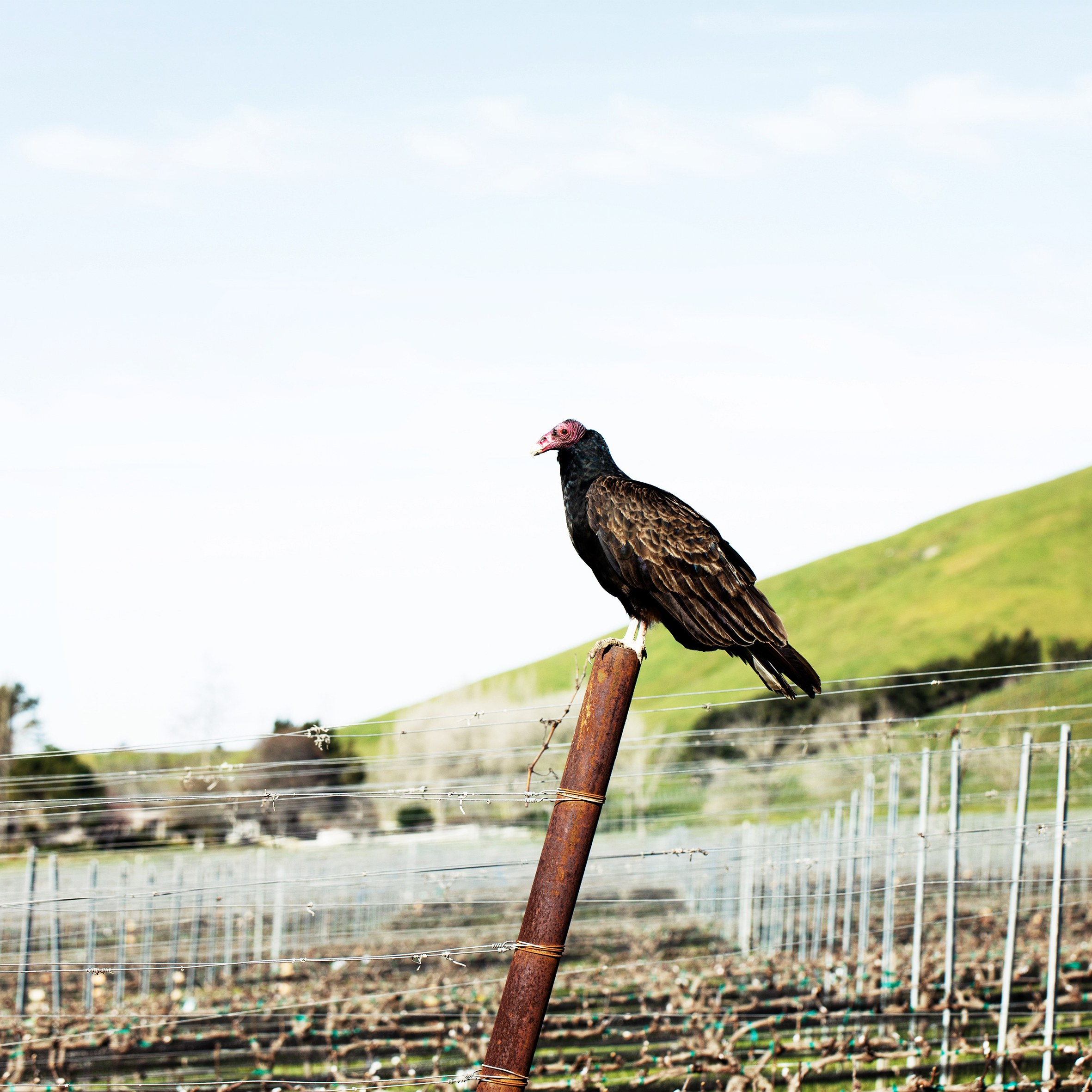
The Sea Smoke Estate
Upon entering the Sea Smoke estate, I spot a large Turkey Vulture sitting atop a fence post. The 2023 growing season has been abundant with rain, which has produced more of everything, including more for ground squirrels and gophers to eat, which means more ground squirrels and more gophers.
As a result, there are more raptors. Eighty owl boxes throughout the estate, and raptor perches at its perimeter, help mitigate the population of ground squirrels and gophers, as do these carrion birds.
I’m greeted by Julian Malone, Director of Vineyard Operations at Sea Smoke. He hops out of a muddy farm truck, wearing a baseball cap, T-shirt, and jeans, but grabs a jacket before too long. It’s a clear but cold day at the estate. He’s got an easy smile and old-fashioned manners. After providing formal introductions to the Great Pyrenees watch dogs circling my legs, Freckles and Samson, we hop in the truck for a tour.
It’s a sprawling estate---1,100 acres---but only 170 of those are planted to vines. The balance of the land is a beguiling mix of organic apple orchards (the apples are sold for cider), cattle grazing land, forests, an idyllic pond, and fields of organically grown hay. We’re barely out of winter, and the vines are just now awakening. There’s some early shoot and leaf growth.
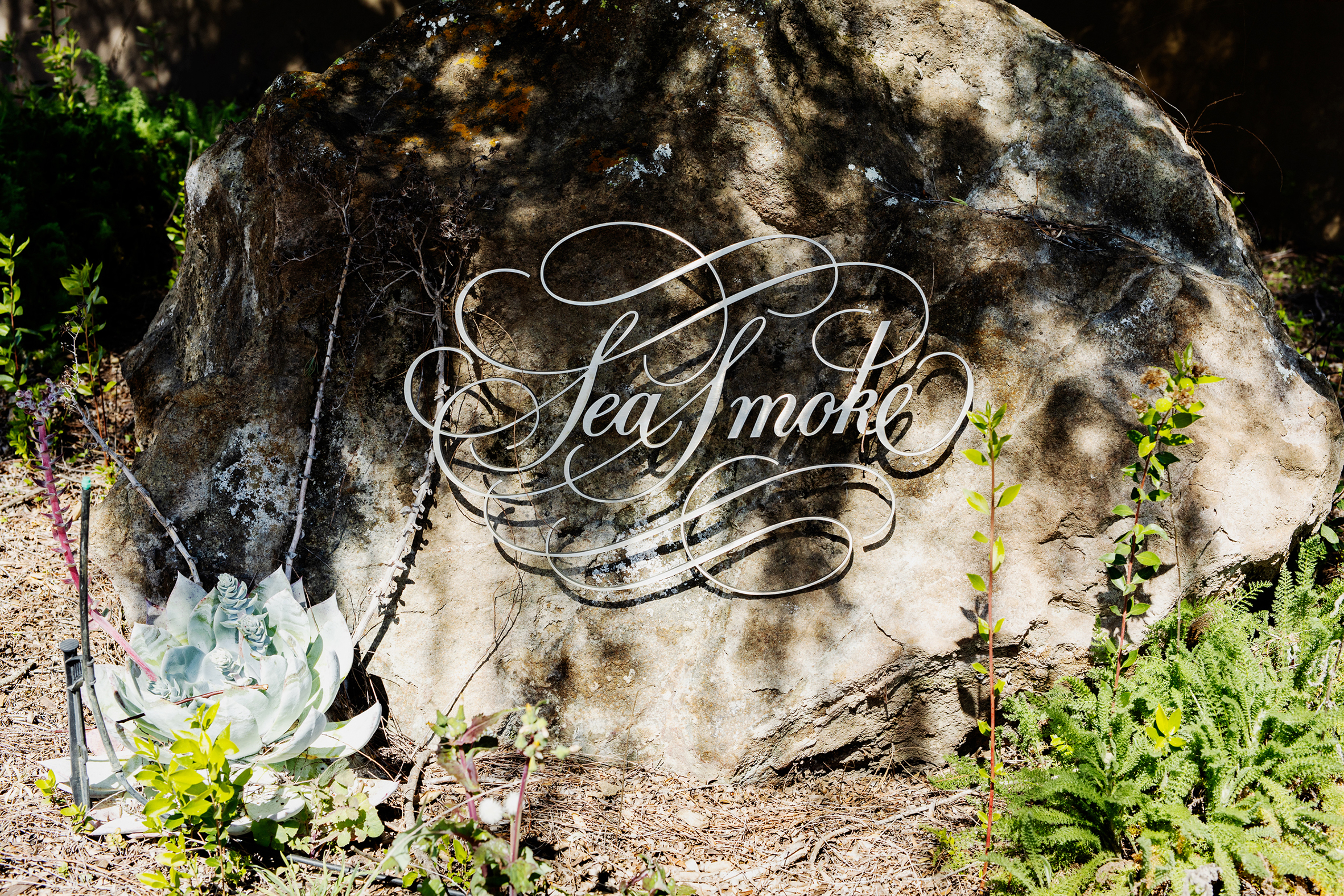
"I’m a child of the world."
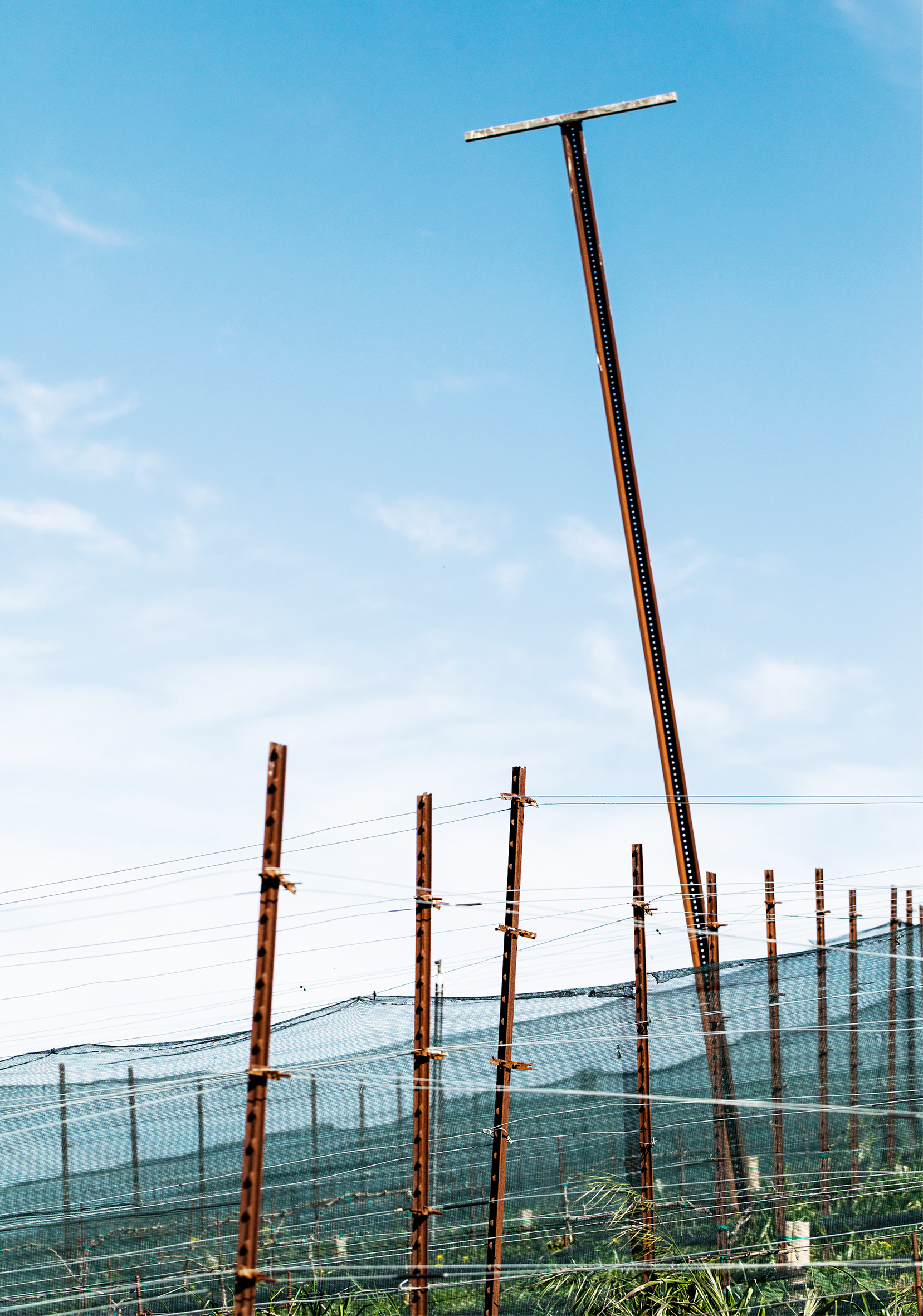
"I’m a child of the world," Malone says. "This is the longest I’ve lived anywhere. Ten years in Santa Barbara County. Seven years with Sea Smoke. This is the best farming gig I will ever have. I’m privileged to take care of such a great property." He spent time living in New Orleans and received his undergraduate degree in Agricultural Science from the University of Adelaide in Australia.
Malone oversees a big team: ten tractor drivers, four irrigators, two shepherds, two technicians, two hundred goats, one hundred and fifty chickens, and four dogs. In addition to Samson and Freckles, Malone is now training two young Anatolian Shepherds, Rocky and Rita, whom he says are "very good at their jobs." They protect the many animals living on the estate in keeping with the guidelines of biodynamic farming.
The cover crops below the vines are a veritable insectary, with bursts of calendula, poppies, Icelandic poppies, and Lady Phacelia, sweetening the air. "We release a bunch of beneficial insects every year," Malone says. "Green Lacewings are a generalist predator, a beneficial insect for us. They’re a Mealy Bug destroyer. Drones sprinkle them around the ranch. They’re able to cover 70 acres in about an hour. We are leaning on the idea that beneficial insects have a pollen source in their adult life. When they’re adults, they’re not predatory. They need some sort of feeding mechanism. And then, when they’re in their larval stages, they’re actively feeding on the bad bugs. The flower sources are an attractant and provide food for them in their adult stages."
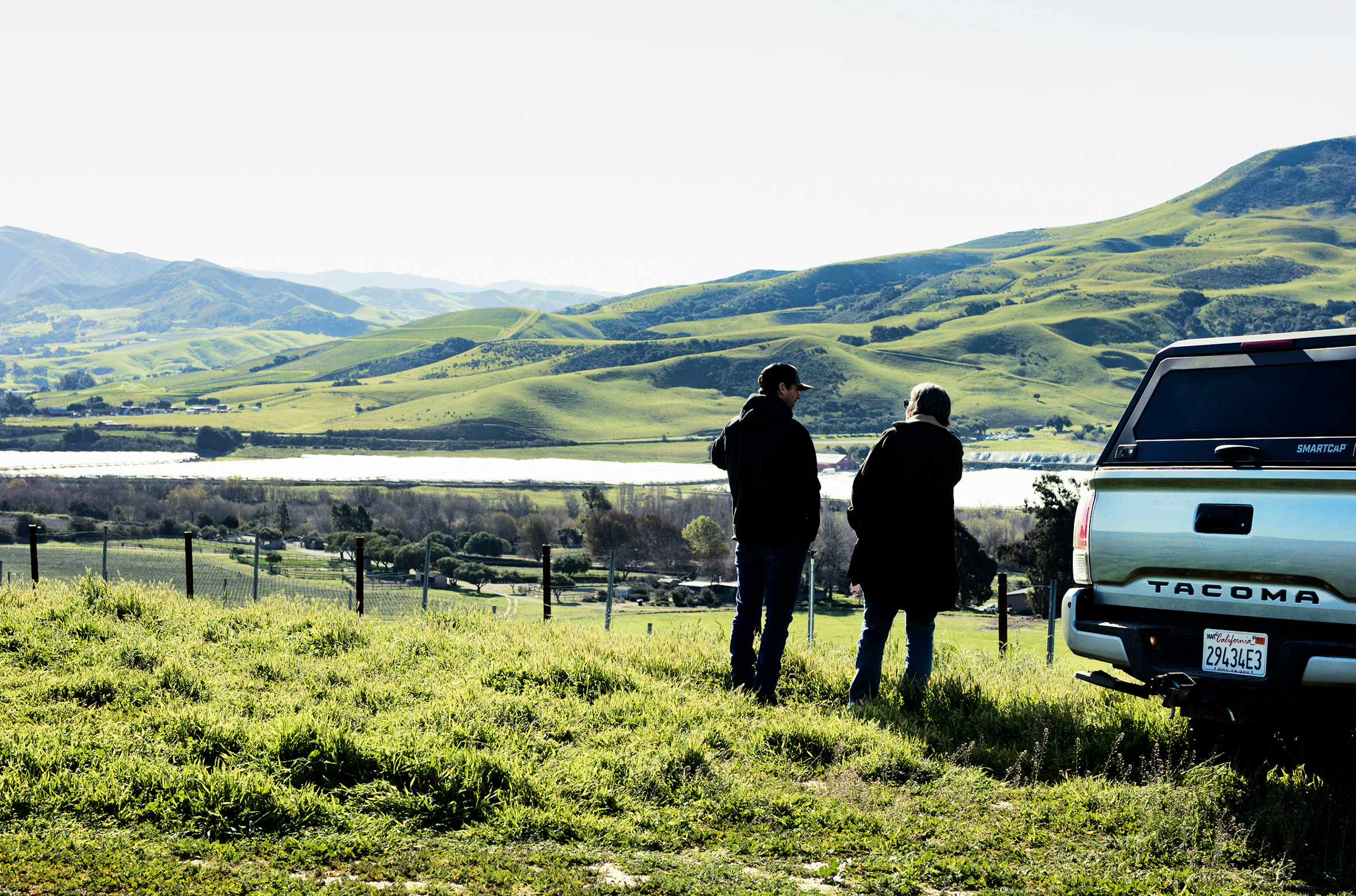
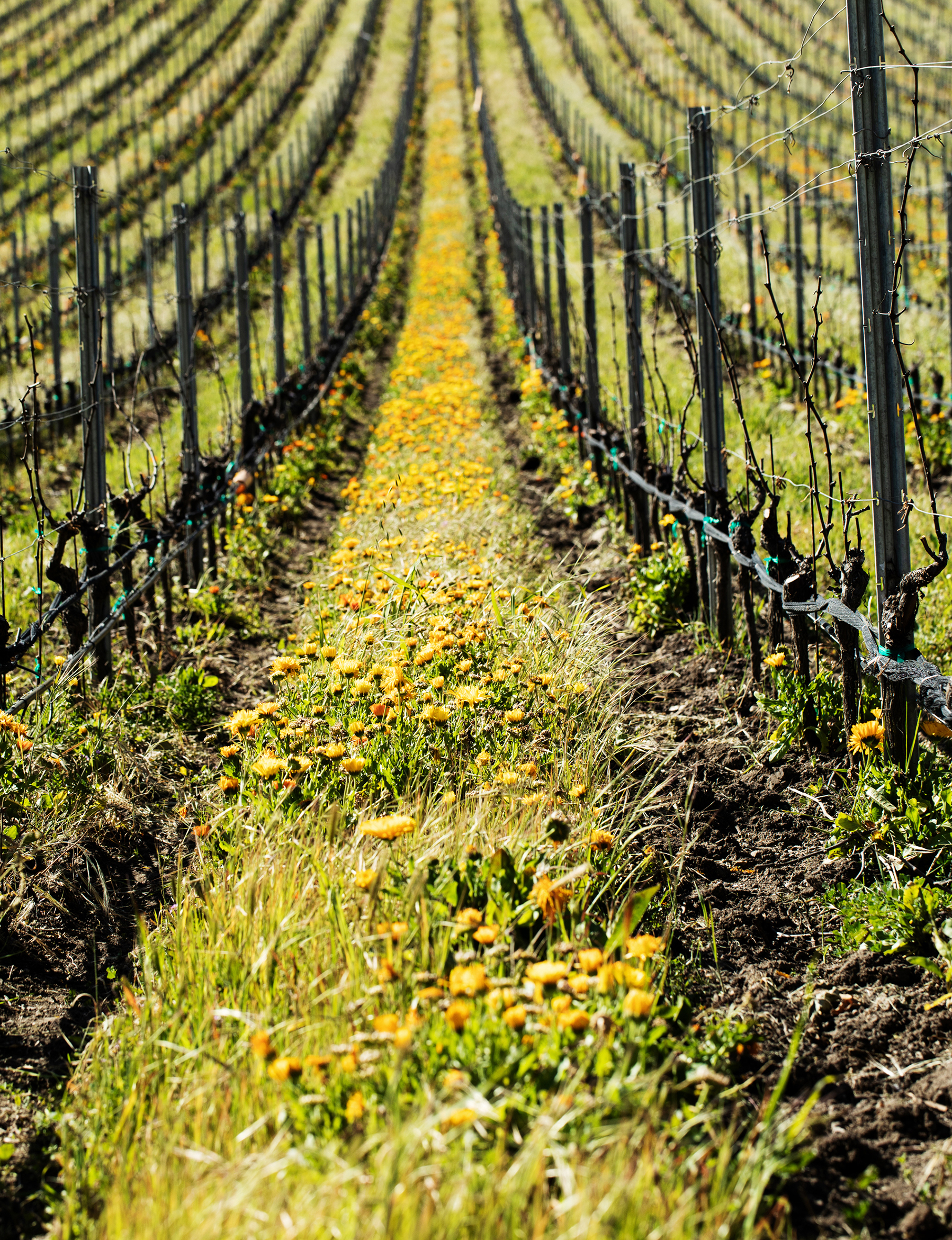
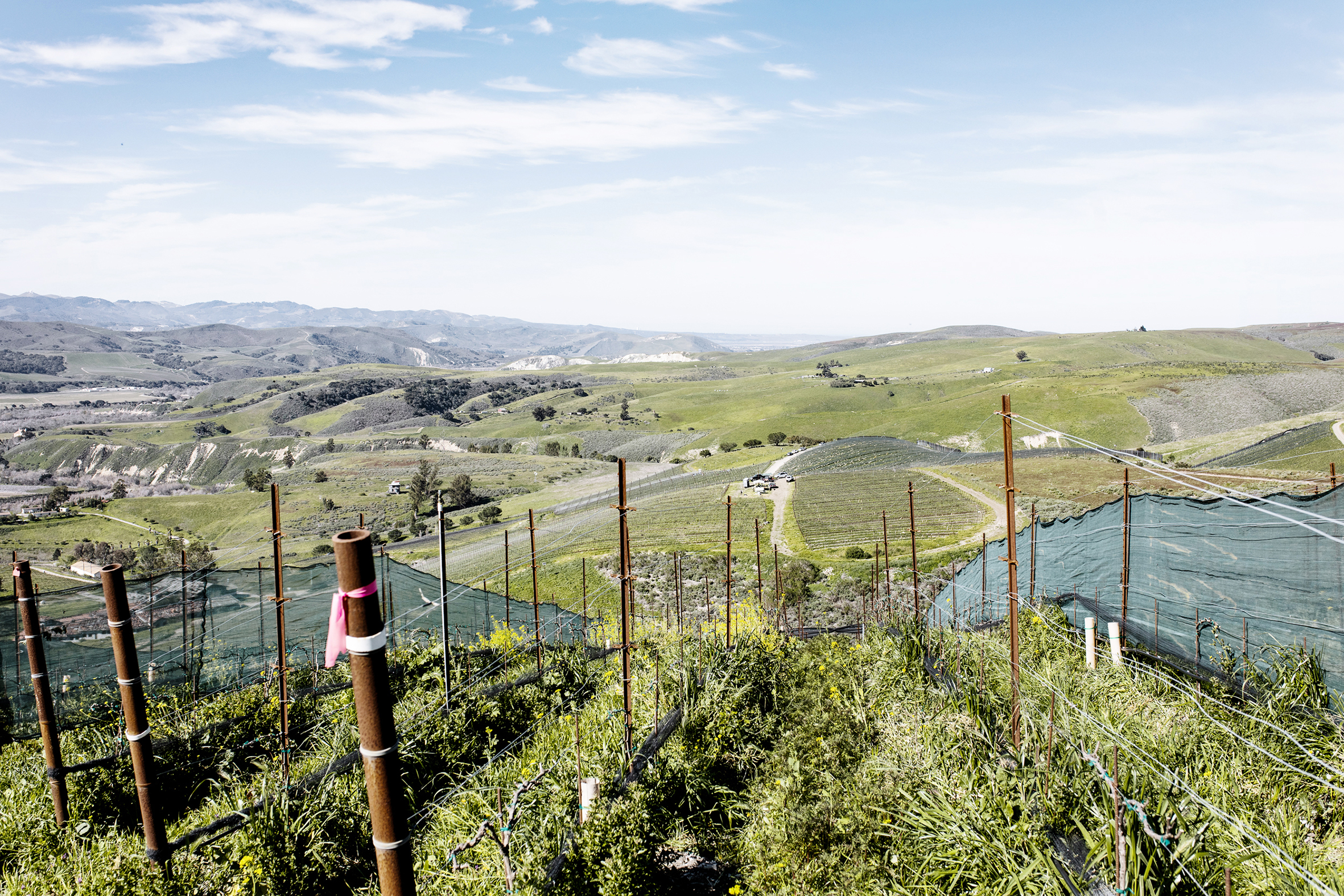
"Farming organically and biodynamically, you have to be nimble, flexible, aware of your surroundings at all times because no season is the same."
As we explore the estate, Malone expertly tackles steep, loose terrain up sloped hillsides. It’s apparent he’s driven these dirt roads many times. At one point, we drive up to the estate’s highest hilltop, Rita’s Crown, just under 1000 feet in elevation.
When we arrive at Monkey Rock, a nearly four-story high mossy boulder covered with goats, we’re greeted by Rocky the Anatolian. The goats pluck leaves from trees and climb the steep face of Monkey Rock with ease. "Goats clear the outside perimeter, which would otherwise be a favorable habitat for sharpshooters," Malone tells me as we exit the truck momentarily to pet a few goats greeting us at the fence line. The goats have dramatically reduced disease pressure at the estate through weed control. A mobile chicken run in the distance delivers chickens to different vineyard blocks. "The chickens help mitigate the population of harmful bugs, too."
"Farming organically and biodynamically, you have to be nimble, flexible, aware of your surroundings at all times because no season is the same," he continues. "This year, we started working in March. During January through March, we had 30 inches of rain. That’s new for us. Normally we’re farming in early January and hauling ass the remainder of the year. This year, we watched the weather, watched how things were growing, and in March we rolled into it."
As we climb onto the horizon, we see fields of hay blanketing the estate below. The team organically farms about 12 acres of hay to supplement their cows, whose waste is used for biodynamic preparations and to help build their compost. "We also take waste from our pond, mulch from trees that have fallen---we’re working on our recipe. We’re not there 100% yet, but in another season or two we’ll figure out that piece of the puzzle. We make our own biochar, which we incorporate into our compost."
He drives me to a series of gigantic, conical pits from which stacking lattices rise; the same shape you see at the bottom is the same shape you see at the top. They look a little like giant ice cream cones. "We do top-down burns, so they’re very hot. The fire at the top consumes the smoke that is generated below, so it’s essentially a smokeless burn, and a very clean burn. Right before it turns to ash, we harvest it, put out the fire, and set it aside." The remaining little pieces of charcoal are then feathered into the compost, soaking up all the good stuff, all the nutrients, and biological life. Acting like slow-release pellets, they help return carbon and nutrients to the estate’s soil. "We’re seeing improvements in the vineyard on an annual basis, and hopefully an improvement in the bottle year after year."
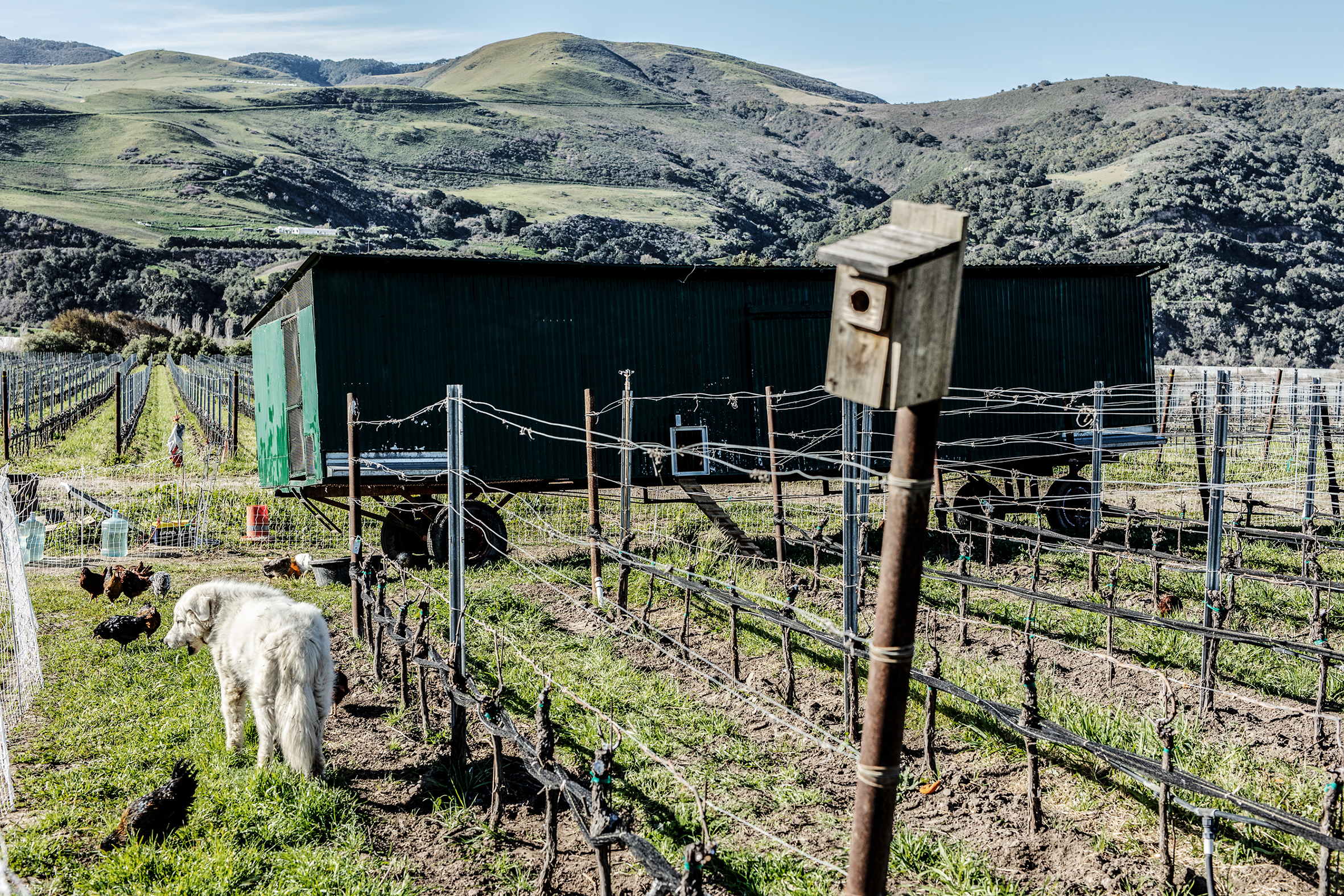
The Winery
I’m impossibly lost inside Sea Smoke’s production facility on the outskirts of Lompoc. It’s dark and cold. I pull my sweater tighter around me as I try to locate one human that might point me in the right direction.
I finally see a tall man in a baseball cap, slightly hunched over, walking towards me. Maybe he’s an HVAC guy? Surely, he’ll be able to help. I say hello and tell him I’m looking for the winemaker.
"I’m Don," he says. That would be Don Schroeder, 43, whose been with Sea Smoke for 20 years. He started out as assistant winemaker and assumed the winemaker position in early 2008. Modest of baring and soft-spoken, he leads me to the room where we’ll taste, but before we sit down, he resolves to begin the day with a glass of sparkling wine. "Twist my lips," I tell him. I don’t need any convincing when it comes to imbibing sparkling wine at the top of the morning.
As he brings over a couple of glasses, I mention the various rooms I’ve walked through to find him, including the barrel room, which is impeccably clean and organized. He explains that they use laser lines to line the barrels up precisely. We’re enjoying their 2016 Sea Spray Blanc de Noir. "It was disgorged in 2021," he says. "It spent a year in the barrel, three years in tirage. Ten months on the cork. It’s a five-year process."
Sea Smoke is one of those rare wineries that achieved greatness very early on. Founded in 1999 by Bob Davids, the 2001 Sea Smoke Pinot Noir, its debut vintage, quickly became a darling of the critics, with the Wine Spectator naming it one of the top 100 wines of the world. The next three consecutive vintages would repeat that distinction, with magazine covers and countless accolades to follow. However, Davids, whose Radica toy company, once the third largest toy company in the world, was later sold to Mattel, remained largely unknown in the wine world. "He said, ‘I don’t feel like I have to be in the spotlight,’" Schroeder tells me, "And I like that."
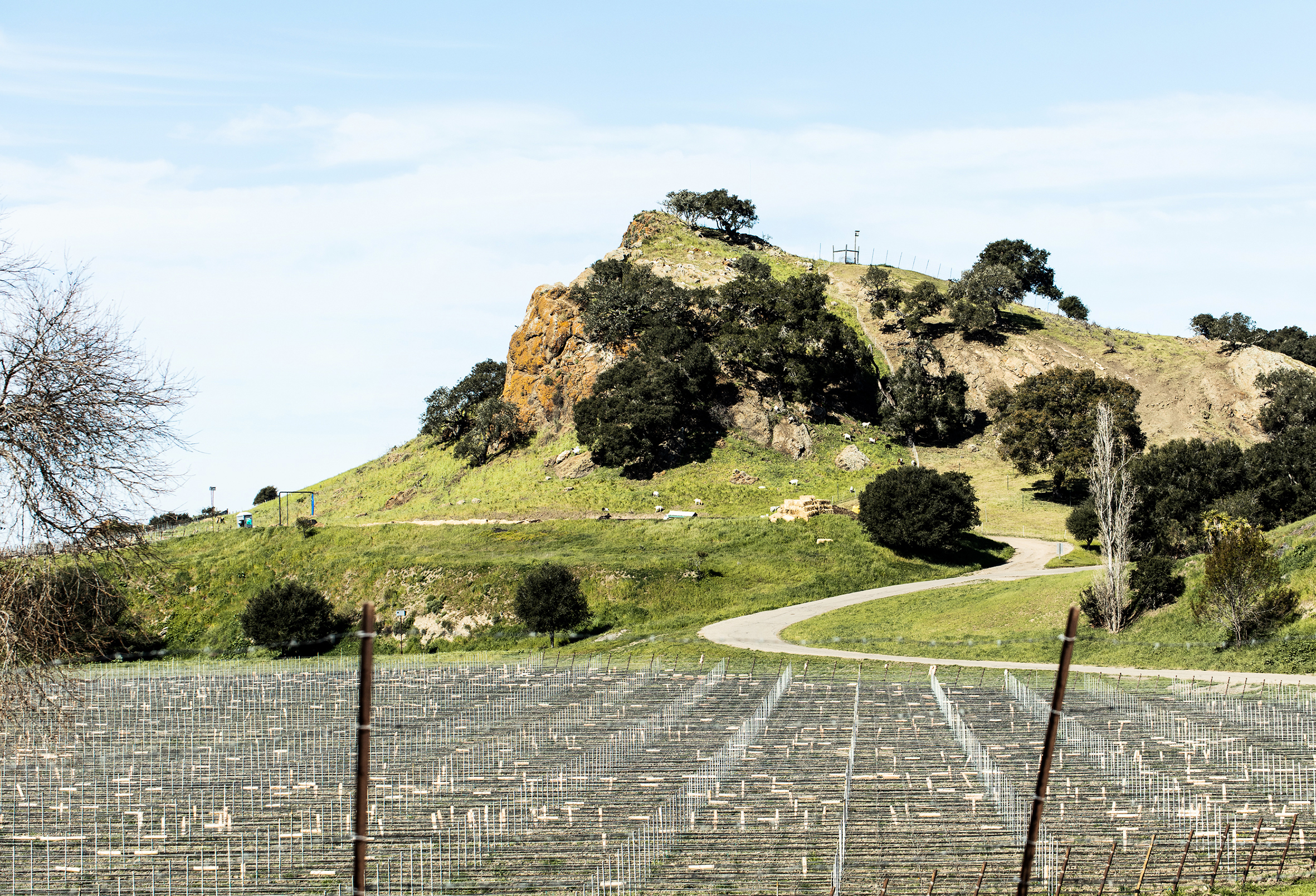
"Do one thing and do it right."
The same could be said for Schroeder, who is private and rarely attends larger wine events, save for the World of Pinot Noir, the only public wine festival at which Sea Smoke is poured.
We next taste through a couple of vintages of the trifecta for which Sea Smoke is best known: the Southing, Ten, and Botella Pinot Noirs. Each wine is different, expressing with great transparency and purity of fruit the terroir of its provenance. Each wine is an exercise in balance, length, energy, and tension. We finish our tasting with the estate Chardonnay. His style is best described as minimal intervention, with the quality of fruit highlighted more than the human hand. As a result, the wines are site- rather than style-driven.
He credits Sea Smoke’s vice president and general manager, Victor Gallegos, with their consistency. "He’s always saying, ‘Don’t rock the boat.’ Do one thing and do it right. Every new year is an opportunity to develop a more intimate relationship with the vineyard. No amount of winemaking expertise can compare to the connection you gain working with the same vineyard year after year consistently. Over 85% of my career has been dedicated to this vineyard, and I have been fortunate to walk through the vines in the early years with Kris or bump into Billy Wathen (of Foxen fame) as he jogged around our vineyard and gave his insights." The Kris he refers to is winemaker Kris Curran, who was the first winemaker at Sea Smoke.
The Sea Smoke team is small, and Schroeder tells me, tight-knit. "Julian, Victor, and I all have a great work relationship, and we all think alike when it comes to quality improvements. We have weekly meetings as a team to go over everything going on, and the vineyard is always a large focus. Our entire team has great synergy together, and we are all discussing potential tweaks and improvements frequently. Ultimately, it comes back to strong communication channels, which is the reason we have one main office with everyone’s desk in the same room."
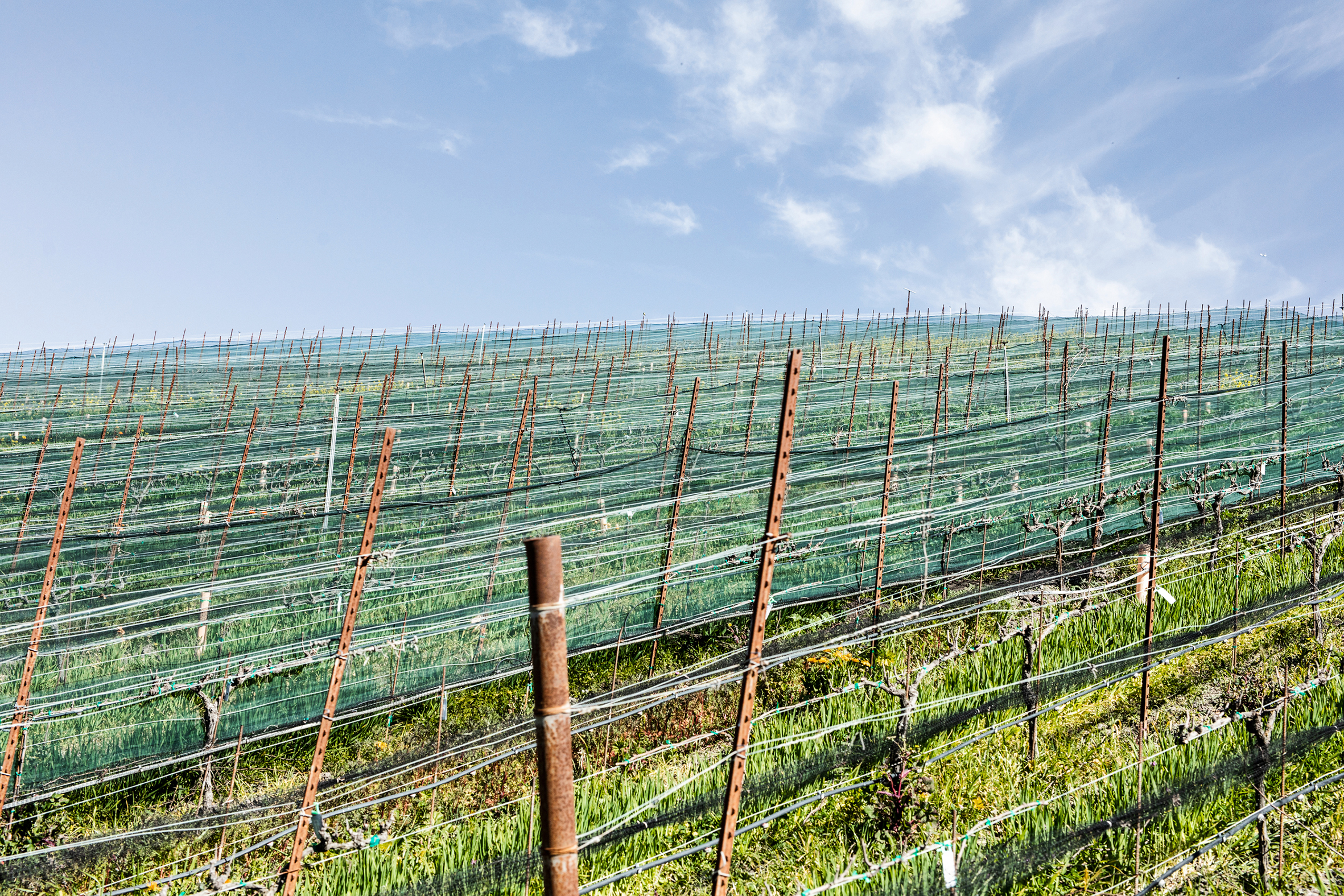
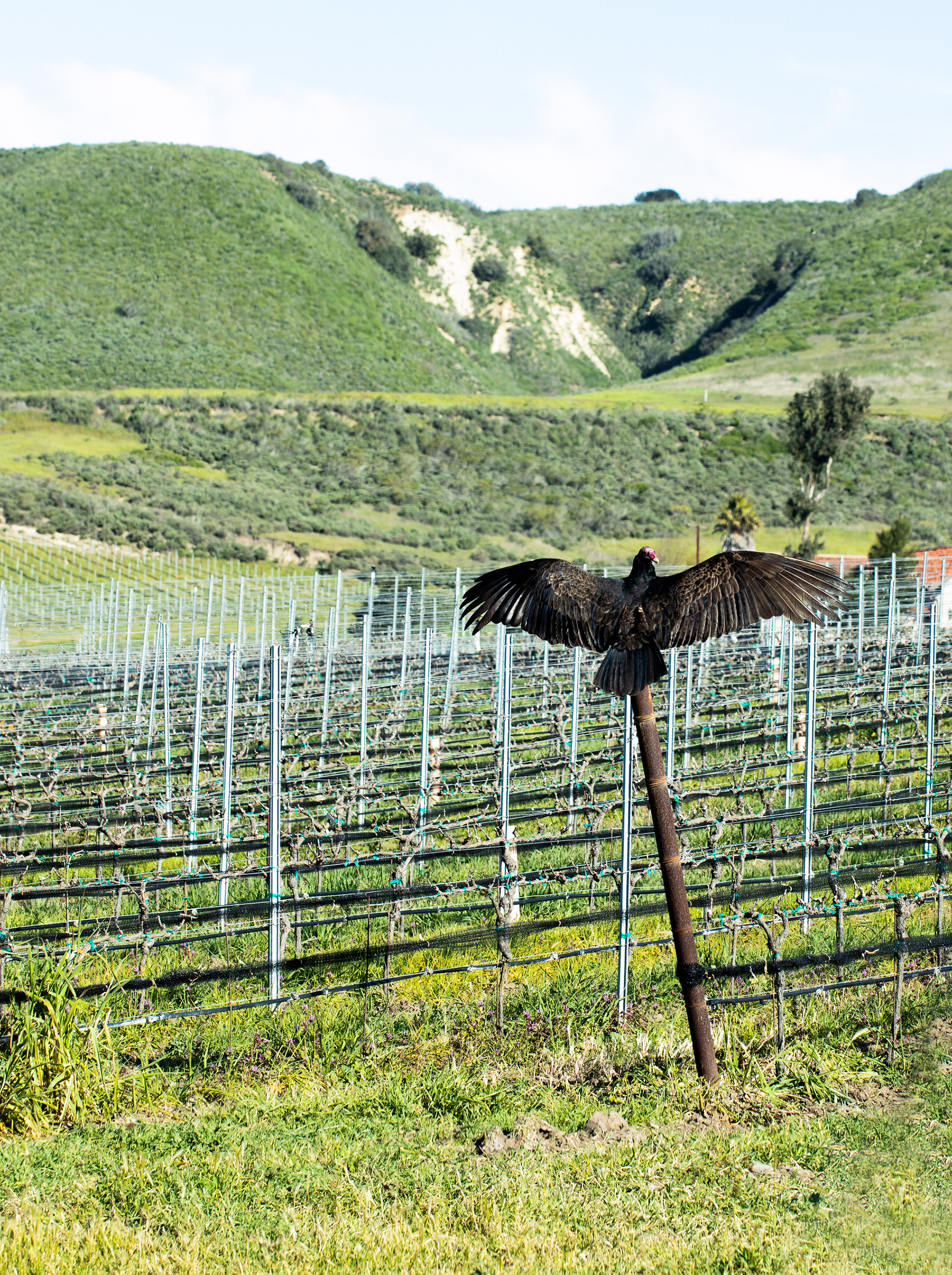
"You inevitably to consider yourself a steward of a magical piece of dirt."
Pico Los Alamos
It’s late April, and I’m in Los Alamos, a small country town about forty-six miles north of Santa Barbara, distinguished for its uncommonly bustling Main Street and colorful locals. I’m at Pico Los Alamos for one of their "Know Thy Farmer" lunches, a series that pairs local organically/ biodynamically farmed wine producers with like-minded farmers for al fresco meals hosted by the purveyors. Founded by restauranteur Will Henry, the series is popular along the Central Coast, so I’ve purchased one of the last tickets available, as Sea Smoke will be featured alongside Motley Crew Ranch, first-generation farmers working in Lompoc and known for their humanely raised meats and eggs.
I meet back up with Malone, who is there to speak about regenerative farming. Schroeder is there, seated alongside his wife. Gallant and elegant, Victor Gallegos, speaking flawless Spanish with a few table mates, sits at the head of one of the long, wooden farmhouse tables.
Gallegos rises to greet the small, intimate gathering of diners. "We spend a lot of time and effort, at least in my family, thinking about organic fruit and fruits and vegetables, but we don’t spend quite as much time thinking about the wine we put in our body. How you farm is a reflection of your belief system."
At Sea Smoke, he says, they believe in"a concept called terroir, and it’s an overused term. For us, it means: if you believe you have an amazing piece of dirt, then everything you do should point to the wine that comes from that piece of dirt tasting like that place. Terroir encompasses soil, micro-, and meso- climates, aspects or exposure, and altitude, but importantly, and this is often overlooked, it’s the people and their energies that farm and make decisions on that piece of property that also define terroir. If you believe that, then it leads you inevitably to consider yourself a steward of that magical piece of dirt, because it’s going to be there a hell of a lot longer than we are. Our highest and best activity is to guard it for the future." The Sea Smoke estate has been farmed organically since 2005 and biodynamically since 2013.
As lunch is served---Cornbread and Honey Butter with Motley Crew Ranch Lamb tartare, paired with the 2016 Sea Spray, to start, followed by three more courses that will be paired with the 2020 Chardonnay and the three 2020 Pinot Noirs, the lunch guests settle into a comfortable afternoon, alternative folk music playing over the speakers. Malone and his wife chat softly nearby. I get to know a couple seated across from me who are enjoying their first outing since their baby was born. We raise a glass to each other across the table while the young mother checks her phone for text updates on their newborn.
–
Article by R. H. Drexel
Photography by Svante Örnberg
See more work from Svante at svanteornberg.se by clicking here!
